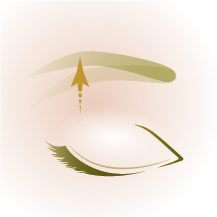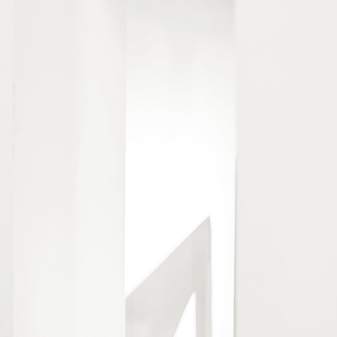Facial cosmetic surgery
Facial Autologous Fat Grafting
FACIALPLASTY
FACIALPLASTY
Facial Autologous Fat Grafting
- Principle
- Before and After
- Case Study
Your own fat may smooth out facial wrinkles, improve the curve of your face, and fill up facial depressions. After the fat survives, it remains there indefinitely without any issues with rejection or relocation.
Where on the face can autologous fat be implanted?
Autologous fat transplantation is frequently performed on the forehead, cheeks, tear troughs, nasolabial folds, chin, and bilateral temporal regions of the face (the husband and wife palace).
How is autologous fat breast augmentation surgery performed?
After several small wounds of 0.5-1 cm that are easy to hide scars, the fat is extracted from the places where body fat is easy to accumulate (such as the abdomen and thighs), and then processed to remove blood and fibrous tissue, and then evenly transplant a proper amount of fat to the body. Bilateral temporal (marital palace), forehead, cheeks, tear trough, nasolabial folds, and chin. Autologous fat transplantation has the problem of fat survival rate, which has a great influence on personal constitution, and may not have an absolute relationship with liposuction and preservation methods. In the past, the literature reported that the fat survival rate was about half, but in places with greater facial mobility, such as the nasolabial folds and the bilateral temporal regions (the husband and wife palace), the survival rate was only about 1/3. No surviving fat will be absorbed by your own body, there is no problem of rejection. The most feared thing about fat transplantation is that too much transplantation at one time can easily cause lumps, calcifications, necrosis, and even cysts, and infection. Not enough can be replenished, but too much can be troublesome to deal with.
Comparison of Facial Autologous Fat Grafting and Artificial Filler Injection
| Autologous Fat Grafting | Artificial Filler Injection | |
|---|---|---|
| Principle Features | Fat is extracted from other parts of the body and transplanted to the face. The fat that survives after transplantation is always there still have to go to the operating room | According to the facial position, choose artificial fillers with different size molecules |
| Cons | May need multiple supplements Transplanting too much fat can lead to clumps, calcifications, necrosis, and even cysts, and risk of infection. Compression garments should be worn after a large number of liposuction sites | Fillers are usually absorbed within 2-3 years The filler is displaced, risk of rejection More expensive per CC |
| Suitable Candidate | Do not want to re-inject fillers Fear of filler rejection and displacement | Fear of surgery Don't want liposuction |
| Recovery Period | 5-7 days | None |
Anesthesia and preoperative planning
1. Typically done with local anesthesia
2. Before surgery, you must tell your doctor if you have any drug allergies.
3. Anticoagulant medication must be stopped a week prior to surgery in order to prevent intraoperative and postoperative bleeding.
4. Smoking should be avoided for at least two weeks before to and following surgery.
5. It is advised that medical professionals regulate and stabilize systemic disorders such as high blood pressure, heart disease, diabetes, abnormal thyroid function, etc. before you have surgery.
6. Please let your doctor know before surgery if you or anybody in your family has swollen feet or hypertrophic scars.
2. Before surgery, you must tell your doctor if you have any drug allergies.
3. Anticoagulant medication must be stopped a week prior to surgery in order to prevent intraoperative and postoperative bleeding.
4. Smoking should be avoided for at least two weeks before to and following surgery.
5. It is advised that medical professionals regulate and stabilize systemic disorders such as high blood pressure, heart disease, diabetes, abnormal thyroid function, etc. before you have surgery.
6. Please let your doctor know before surgery if you or anybody in your family has swollen feet or hypertrophic scars.
Recovery process and post-operative care
1. Prophylactic antibiotics, anti-inflammatory, analgesic, detumescence, hemostasis, and other oral medicines will be given for three days after surgery;
2. Wound Care: The wound is small and usually not needed
3. The degree of postoperative bruising and swelling varies from person to person. Generally, it is most obvious 3 or 4 days after the operation, and most patients can be relieved about two weeks after the operation.
4. You can take a bath normally after the operation. But avoid swimming, splashing in the water by the seaside stream and soaking in hot springs
5. Avoid strenuous activities after surgery, such as heavy training, running, mountaineering, rock climbing…etc. It can increase blood pressure and cause bleeding, or open wounds.
6. The diet is generally normal, but avoid tobacco, alcohol and spicy food (too spicy and salty)
7. It is recommended to wear a compression garment for three months after a large number of liposuction sites
2. Wound Care: The wound is small and usually not needed
3. The degree of postoperative bruising and swelling varies from person to person. Generally, it is most obvious 3 or 4 days after the operation, and most patients can be relieved about two weeks after the operation.
4. You can take a bath normally after the operation. But avoid swimming, splashing in the water by the seaside stream and soaking in hot springs
5. Avoid strenuous activities after surgery, such as heavy training, running, mountaineering, rock climbing…etc. It can increase blood pressure and cause bleeding, or open wounds.
6. The diet is generally normal, but avoid tobacco, alcohol and spicy food (too spicy and salty)
7. It is recommended to wear a compression garment for three months after a large number of liposuction sites
Follow-ups and complications
1. A modest receding of the hairline. Consider an endoscopic forehead lift with an incision at the front of the hairline if your forehead is too high.
2. There is a danger of infection, hemorrhage, inadequate wound healing, etc. with any operation.
3. Although all surgeries leave scars, the plastic surgeon will meticulously stitch and use extremely thin sutures to tuck the scars into the creases of the skin and the borders of the hair, making them less noticeable and more difficult to locate. Even so, the scar may still be momentarily red, elevated (1-2 months after the operation), itchy, and numb before it stabilizes, but it will typically gradually decrease after two to six months. obvious.
2. There is a danger of infection, hemorrhage, inadequate wound healing, etc. with any operation.
3. Although all surgeries leave scars, the plastic surgeon will meticulously stitch and use extremely thin sutures to tuck the scars into the creases of the skin and the borders of the hair, making them less noticeable and more difficult to locate. Even so, the scar may still be momentarily red, elevated (1-2 months after the operation), itchy, and numb before it stabilizes, but it will typically gradually decrease after two to six months. obvious.



















